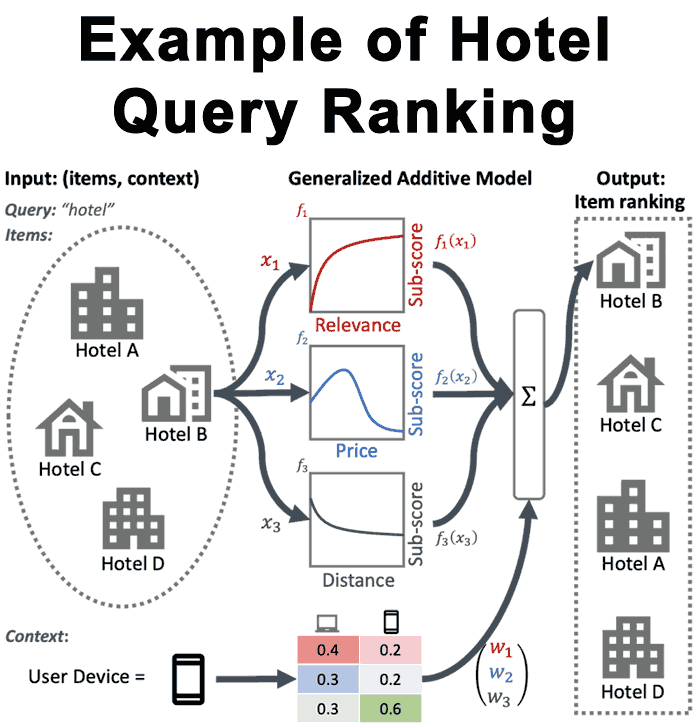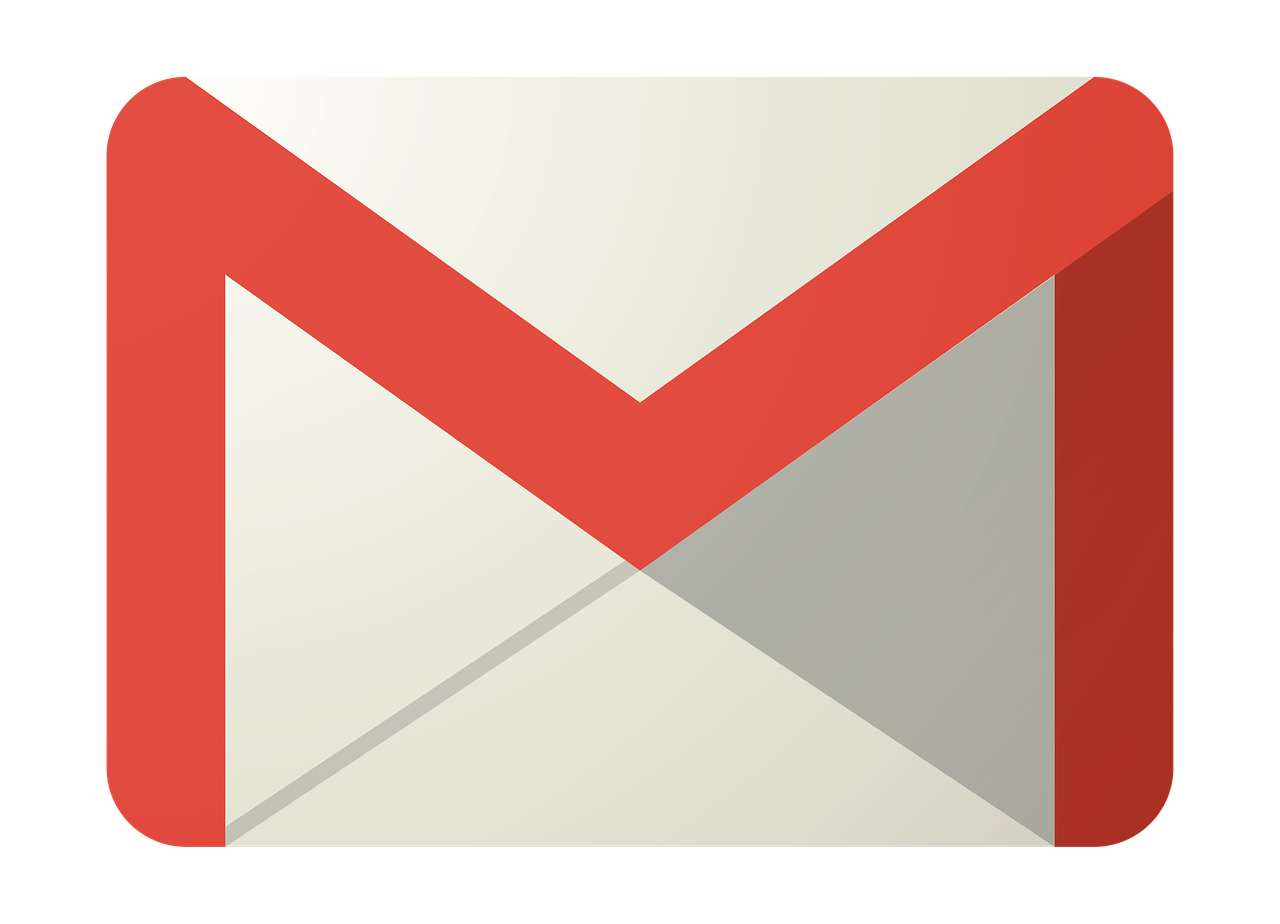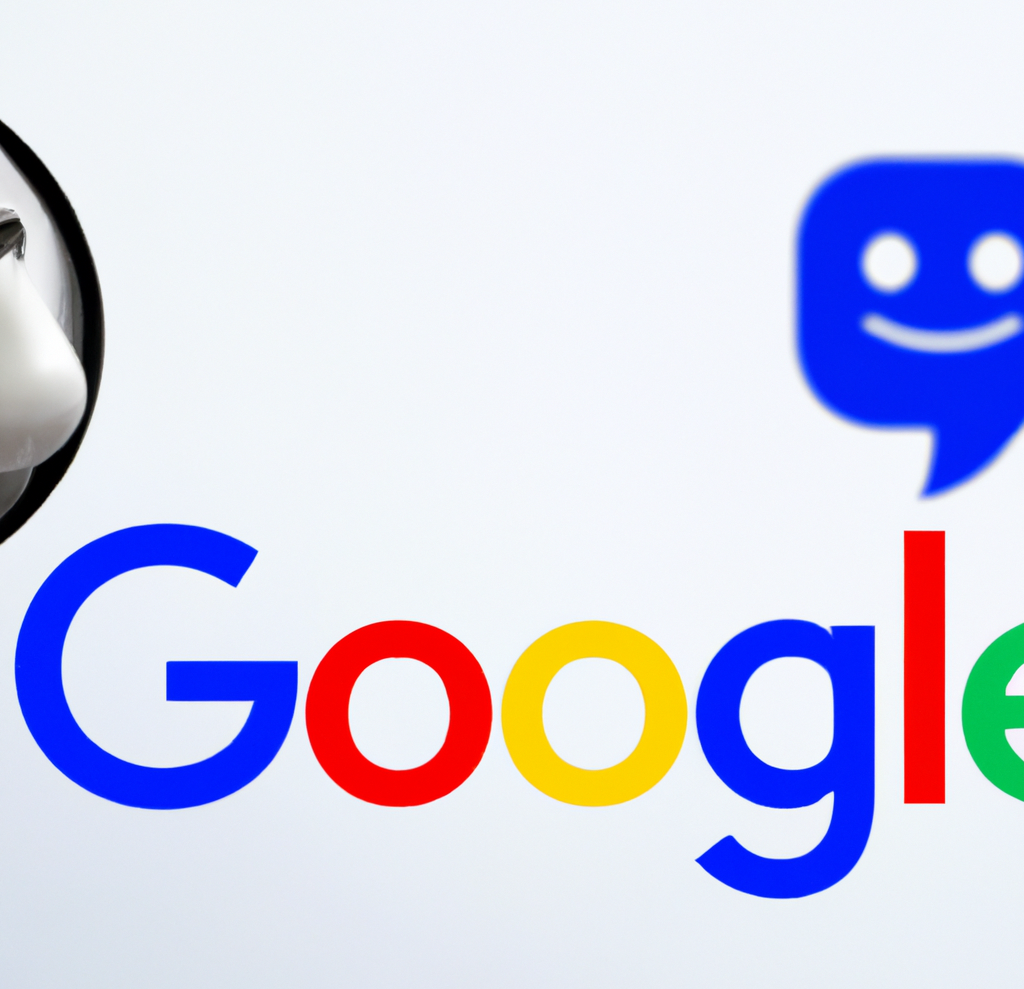Google’s New Technology Helps Create Powerful Ranking-Algorithms

Google has announced the release of improved technology that makes it easier and faster to research and develop new algorithms that can be deployed quickly.
This gives Google the ability to rapidly create new anti-spam algorithms, improved natural language processing and ranking related algorithms and be able to get them into production faster than ever.
Improved TF-Ranking Coincides with Dates of Recent Google Updates
This is of interest because Google has rolled out several spam fighting algorithms and two core algorithm updates in June and July 2021. Those developments directly followed the May 2021 publication of this new technology.
The timing could be coincidental but considering everything that the new version of Keras-based TF-Ranking does, it may be important to familiarize oneself with it in order to understand why Google has increased the pace of releasing new ranking-related algorithm updates.
New Version of Keras-based TF-Ranking
Google announced a new version of TF-Ranking that can be used to improve neural learning to rank algorithms as well as natural language processing algorithms like BERT.
It’s a powerful way to create new algorithms and to amplify existing ones, so to speak, and to do it in a way that is incredibly fast.
TensorFlow Ranking
According to Google, TensorFlow is a machine learning platform.
In a YouTube video from 2019, the first version of TensorFlow Ranking was described as:
“The first open source deep learning library for learning to rank (LTR) at scale.”
The innovation of the original TF-Ranking platform was that it changed how relevant documents were ranked.
Previously relevant documents were compared to each other in what is called pairwise ranking. The probability of one document being relevant to a query was compared to the probability of another item.
This was a comparison between pairs of documents and not a comparison of the entire list.
The innovation of TF-Ranking is that it enabled the comparison of the entire list of documents at a time, which is called multi-item scoring. This approach allows better ranking decisions.
Improved TF-Ranking Allows Fast Development of Powerful New Algorithms
Google’s article published on their AI Blog says that the new TF-Ranking is a major release that makes it easier than ever to set up learning to rank (LTR) models and get them into live production faster.
This means that Google can create new algorithms and add them to search faster than ever.
The article states:
“Our native Keras ranking model has a brand-new workflow design, including a flexible ModelBuilder, a DatasetBuilder to set up training data, and a Pipeline to train the model with the provided dataset.
These components make building a customized LTR model easier than ever, and facilitate rapid exploration of new model structures for production and research.”
TF-Ranking BERT
When an article or research paper states that the results were marginally better, offers caveats and states that more research was needed, that is an indication that the algorithm under discussion might not be in use because it’s not ready or a dead-end.
That is not the case of TFR-BERT, a combination of TF-Ranking and BERT.
BERT is a machine learning approach to natural language processing. It’s a way to to understand search queries and web page content.
BERT is one of the most important updates to Google and Bing in the last few years.
The article states that combining TF-R with BERT to optimize the ordering of list inputs generated “significant improvements.”
This statement that the results were significant is important because it raises the probability that something like this is currently in use.
The implication is that Keras-based TF-Ranking made BERT more powerful.
According to Google:
“Our experience shows that this TFR-BERT architecture delivers significant improvements in pretrained language model performance, leading to state-of-the-art performance for several popular ranking tasks…”
TF-Ranking and GAMs
There’s another kind of algorithm, called Generalized Additive Models (GAMs), that TF-Ranking also improves and makes an even more powerful version than the original.
One of the things that makes this algorithm important is that it is transparent in that everything that goes into generating the ranking can be seen and understood.
Google explained the importance for transparency like this:
“Transparency and interpretability are important factors in deploying LTR models in ranking systems that can be involved in determining the outcomes of processes such as loan eligibility assessment, advertisement targeting, or guiding medical treatment decisions.
In such cases, the contribution of each individual feature to the final ranking should be examinable and understandable to ensure transparency, accountability and fairness of the outcomes.”
The problem with GAMs is that it wasn’t known how to apply this technology to ranking type problems.
In order to solve this problem and be able to use GAMs in a ranking setting, TF-Ranking was used to create neural ranking Generalized Additive Models (GAMs) that is more open to how web pages are ranked.
Google calls this, Interpretable Learning-to-Rank.
Here’s what the Google AI article says:
“To this end, we have developed a neural ranking GAM — an extension of generalized additive models to ranking problems.
Unlike standard GAMs, a neural ranking GAM can take into account both the features of the ranked items and the context features (e.g., query or user profile) to derive an interpretable, compact model.
For example, in the figure below, using a neural ranking GAM makes visible how distance, price, and relevance, in the context of a given user device, contribute to the final ranking of the hotel.
Neural ranking GAMs are now available as a part of TF-Ranking…”

I asked Jeff Coyle, co-founder of AI content optimization technology MarketMuse (@MarketMuseCo), about TF-Ranking and GAMs.
Jeffrey, who has a computer science background as well as decades of experience in search marketing, noted that GAMs is an important technology and improving it was an important event.
Mr. Coyle shared:
“I’ve spent significant time researching the neural ranking GAMs innovation and the possible impact on context analysis (for queries) which has been a long-term goal of Google’s scoring teams.
Neural RankGAM and related technologies are deadly weapons for personalization (notably user data and context info, like location) and for intent analysis.
With keras_dnn_tfrecord.py available as a public example, we get a glimpse at the innovation at a basic level.
I recommend that everyone check out that code.”
Outperforming Gradient Boosted Decision Trees (BTDT)
Beating the standard in an algorithm is important because it means that the new approach is an achievement that improves the quality of search results.
In this case the standard is gradient boosted decision trees (GBDTs), a machine learning technique that has several advantages.
But Google also explains that GBDTs also have disadvantages:
“GBDTs cannot be directly applied to large discrete feature spaces, such as raw document text. They are also, in general, less scalable than neural ranking models.”
In a research paper titled, Are Neural Rankers still Outperformed by Gradient Boosted Decision Trees? the researchers state that neural learning to rank models are “by a large margin inferior” to… tree-based implementations.”
Google’s researchers used the new Keras-based TF-Ranking to produce what they called, Data Augmented Self-Attentive Latent Cross (DASALC) model.
DASALC is important because it is able to match or surpass the current state of the art baselines:
“Our models are able to perform comparatively with the strong tree-based baseline, while outperforming recently published neural learning to rank methods by a large margin. Our results also serve as a benchmark for neural learning to rank models.”
Keras-based TF-Ranking Speeds Development of Ranking Algorithms
The important takeaway is that this new system speeds up the research and development of new ranking systems, which includes identifying spam to rank them out of the search results.
The article concludes:
“All in all, we believe that the new Keras-based TF-Ranking version will make it easier to conduct neural LTR research and deploy production-grade ranking systems.”
Google has been innovating at an increasingly faster rate these past few months, with several spam algorithm updates and two core algorithm updates over the course of two months.
These new technologies may be why Google has been rolling out so many new algorithms to improve spam fighting and ranking websites in general.
Citations
Google AI Blog Article
Advances in TF-Ranking
Google’s New DASALC Algorithm
Are Neural Rankers still Outperformed by Gradient Boosted Decision Trees?
TensorFlow Ranking v0.4.0 GitHub page
https://github.com/tensorflow/ranking/releases/tag/v0.4.0
Keras Example keras_dnn_tfrecord.py
AI
Exploring the Evolution of Language Translation: A Comparative Analysis of AI Chatbots and Google Translate

According to an article on PCMag, while Google Translate makes translating sentences into over 100 languages easy, regular users acknowledge that there’s still room for improvement.
In theory, large language models (LLMs) such as ChatGPT are expected to bring about a new era in language translation. These models consume vast amounts of text-based training data and real-time feedback from users worldwide, enabling them to quickly learn to generate coherent, human-like sentences in a wide range of languages.
However, despite the anticipation that ChatGPT would revolutionize translation, previous experiences have shown that such expectations are often inaccurate, posing challenges for translation accuracy. To put these claims to the test, PCMag conducted a blind test, asking fluent speakers of eight non-English languages to evaluate the translation results from various AI services.
The test compared ChatGPT (both the free and paid versions) to Google Translate, as well as to other competing chatbots such as Microsoft Copilot and Google Gemini. The evaluation involved comparing the translation quality for two test paragraphs across different languages, including Polish, French, Korean, Spanish, Arabic, Tagalog, and Amharic.
In the first test conducted in June 2023, participants consistently favored AI chatbots over Google Translate. ChatGPT, Google Bard (now Gemini), and Microsoft Bing outperformed Google Translate, with ChatGPT receiving the highest praise. ChatGPT demonstrated superior performance in converting colloquialisms, while Google Translate often provided literal translations that lacked cultural nuance.
For instance, ChatGPT accurately translated colloquial expressions like “blow off steam,” whereas Google Translate produced more literal translations that failed to resonate across cultures. Participants appreciated ChatGPT’s ability to maintain consistent levels of formality and its consideration of gender options in translations.
The success of AI chatbots like ChatGPT can be attributed to reinforcement learning with human feedback (RLHF), which allows these models to learn from human preferences and produce culturally appropriate translations, particularly for non-native speakers. However, it’s essential to note that while AI chatbots outperformed Google Translate, they still had limitations and occasional inaccuracies.
In a subsequent test, PCMag evaluated different versions of ChatGPT, including the free and paid versions, as well as language-specific AI agents from OpenAI’s GPTStore. The paid version of ChatGPT, known as ChatGPT Plus, consistently delivered the best translations across various languages. However, Google Translate also showed improvement, performing surprisingly well compared to previous tests.
Overall, while ChatGPT Plus emerged as the preferred choice for translation, Google Translate demonstrated notable improvement, challenging the notion that AI chatbots are always superior to traditional translation tools.
Source: https://www.pcmag.com/articles/google-translate-vs-chatgpt-which-is-the-best-language-translator
Google Implements Stricter Guidelines for Mass Email Senders to Gmail Users

Beginning in April, Gmail senders bombarding users with unwanted mass emails will encounter a surge in message rejections unless they comply with the freshly minted Gmail email sender protocols, Google cautions.
Fresh Guidelines for Dispatching Mass Emails to Gmail Inboxes In an elucidative piece featured on Forbes, it was highlighted that novel regulations are being ushered in to shield Gmail users from the deluge of unsolicited mass emails. Initially, there were reports surfacing about certain marketers receiving error notifications pertaining to messages dispatched to Gmail accounts. Nonetheless, a Google representative clarified that these specific errors, denoted as 550-5.7.56, weren’t novel but rather stemmed from existing authentication prerequisites.
Moreover, Google has verified that commencing from April, they will initiate “the rejection of a portion of non-compliant email traffic, progressively escalating the rejection rate over time.” Google elaborates that, for instance, if 75% of the traffic adheres to the new email sender authentication criteria, then a portion of the remaining non-conforming 25% will face rejection. The exact proportion remains undisclosed. Google does assert that the implementation of the new regulations will be executed in a “step-by-step fashion.”
This cautious and methodical strategy seems to have already kicked off, with transient errors affecting a “fraction of their non-compliant email traffic” coming into play this month. Additionally, Google stipulates that bulk senders will be granted until June 1 to integrate “one-click unsubscribe” in all commercial or promotional correspondence.
Exclusively Personal Gmail Accounts Subject to Rejection These alterations exclusively affect bulk emails dispatched to personal Gmail accounts. Entities sending out mass emails, specifically those transmitting a minimum of 5,000 messages daily to Gmail accounts, will be mandated to authenticate outgoing emails and “refrain from dispatching unsolicited emails.” The 5,000 message threshold is tabulated based on emails transmitted from the same principal domain, irrespective of the employment of subdomains. Once the threshold is met, the domain is categorized as a permanent bulk sender.
These guidelines do not extend to communications directed at Google Workspace accounts, although all senders, including those utilizing Google Workspace, are required to adhere to the updated criteria.
Augmented Security and Enhanced Oversight for Gmail Users A Google spokesperson emphasized that these requisites are being rolled out to “fortify sender-side security and augment user control over inbox contents even further.” For the recipient, this translates to heightened trust in the authenticity of the email sender, thus mitigating the risk of falling prey to phishing attempts, a tactic frequently exploited by malevolent entities capitalizing on authentication vulnerabilities. “If anything,” the spokesperson concludes, “meeting these stipulations should facilitate senders in reaching their intended recipients more efficiently, with reduced risks of spoofing and hijacking by malicious actors.”
Google’s Next-Gen AI Chatbot, Gemini, Faces Delays: What to Expect When It Finally Launches

In an unexpected turn of events, Google has chosen to postpone the much-anticipated debut of its revolutionary generative AI model, Gemini. Initially poised to make waves this week, the unveiling has now been rescheduled for early next year, specifically in January.
Gemini is set to redefine the landscape of conversational AI, representing Google’s most potent endeavor in this domain to date. Positioned as a multimodal AI chatbot, Gemini boasts the capability to process diverse data types. This includes a unique proficiency in comprehending and generating text, images, and various content formats, even going so far as to create an entire website based on a combination of sketches and written descriptions.
Originally, Google had planned an elaborate series of launch events spanning California, New York, and Washington. Regrettably, these events have been canceled due to concerns about Gemini’s responsiveness to non-English prompts. According to anonymous sources cited by The Information, Google’s Chief Executive, Sundar Pichai, personally decided to postpone the launch, acknowledging the importance of global support as a key feature of Gemini’s capabilities.
Gemini is expected to surpass the renowned ChatGPT, powered by OpenAI’s GPT-4 model, and preliminary private tests have shown promising results. Fueled by significantly enhanced computing power, Gemini has outperformed GPT-4, particularly in FLOPS (Floating Point Operations Per Second), owing to its access to a multitude of high-end AI accelerators through the Google Cloud platform.
SemiAnalysis, a research firm affiliated with Substack Inc., expressed in an August blog post that Gemini appears poised to “blow OpenAI’s model out of the water.” The extensive compute power at Google’s disposal has evidently contributed to Gemini’s superior performance.
Google’s Vice President and Manager of Bard and Google Assistant, Sissie Hsiao, offered insights into Gemini’s capabilities, citing examples like generating novel images in response to specific requests, such as illustrating the steps to ice a three-layer cake.
While Google’s current generative AI offering, Bard, has showcased noteworthy accomplishments, it has struggled to achieve the same level of consumer awareness as ChatGPT. Gemini, with its unparalleled capabilities, is expected to be a game-changer, demonstrating impressive multimodal functionalities never seen before.
During the initial announcement at Google’s I/O developer conference in May, the company emphasized Gemini’s multimodal prowess and its developer-friendly nature. An application programming interface (API) is under development, allowing developers to seamlessly integrate Gemini into third-party applications.
As the world awaits the delayed unveiling of Gemini, the stakes are high, with Google aiming to revolutionize the AI landscape and solidify its position as a leader in generative artificial intelligence. The postponed launch only adds to the anticipation surrounding Gemini’s eventual debut in the coming year.
-

 MARKETING6 days ago
MARKETING6 days agoRoundel Media Studio: What to Expect From Target’s New Self-Service Platform
-

 SEO6 days ago
SEO6 days agoGoogle Limits News Links In California Over Proposed ‘Link Tax’ Law
-
SEARCHENGINES6 days ago
Daily Search Forum Recap: April 12, 2024
-

 SEO5 days ago
SEO5 days ago10 Paid Search & PPC Planning Best Practices
-

 SEARCHENGINES5 days ago
SEARCHENGINES5 days agoGoogle Core Update Volatility, Helpful Content Update Gone, Dangerous Google Search Results & Google Ads Confusion
-

 SEO7 days ago
SEO7 days agoGoogle Unplugs “Notes on Search” Experiment
-

 MARKETING6 days ago
MARKETING6 days ago2 Ways to Take Back the Power in Your Business: Part 2
-

 PPC6 days ago
PPC6 days agoCritical Display Error in Brand Safety Metrics On Twitter/X Corrected














